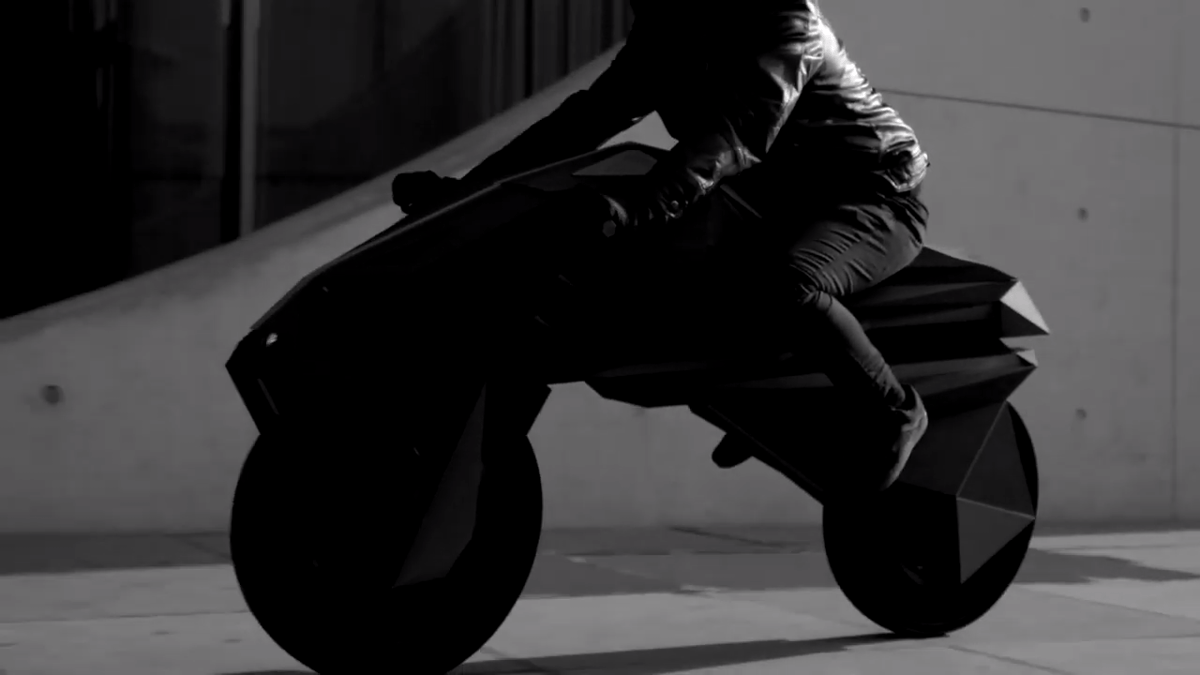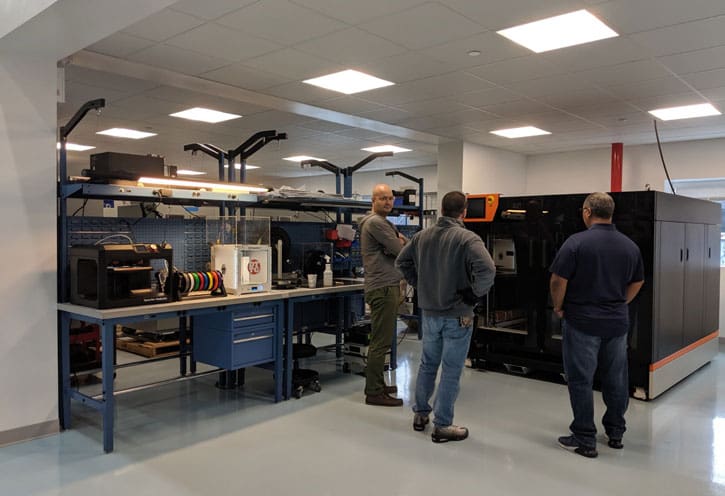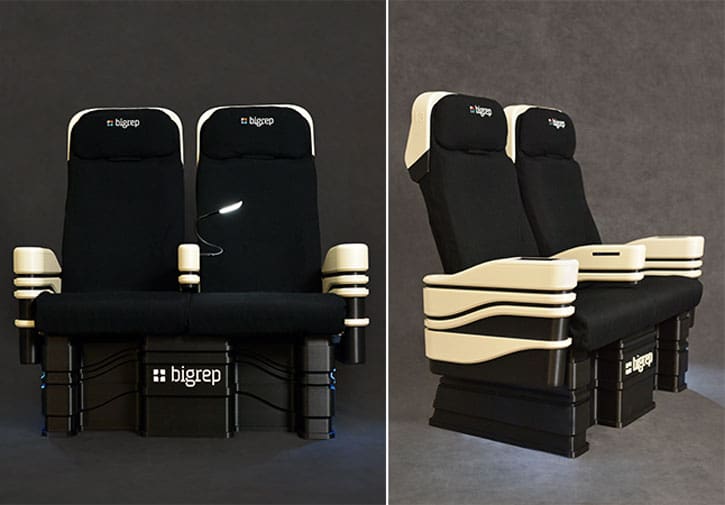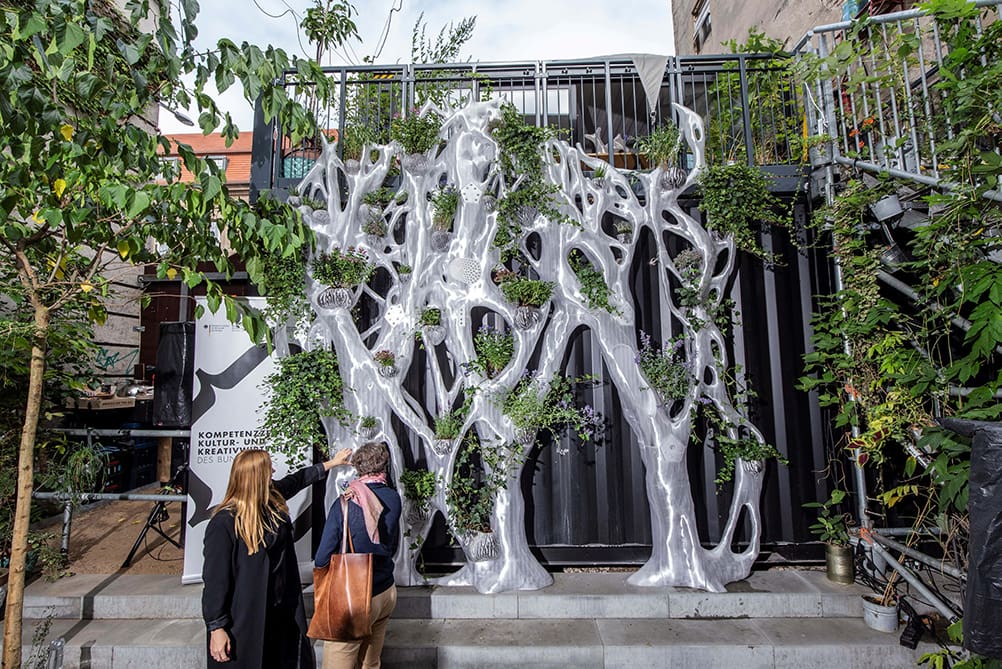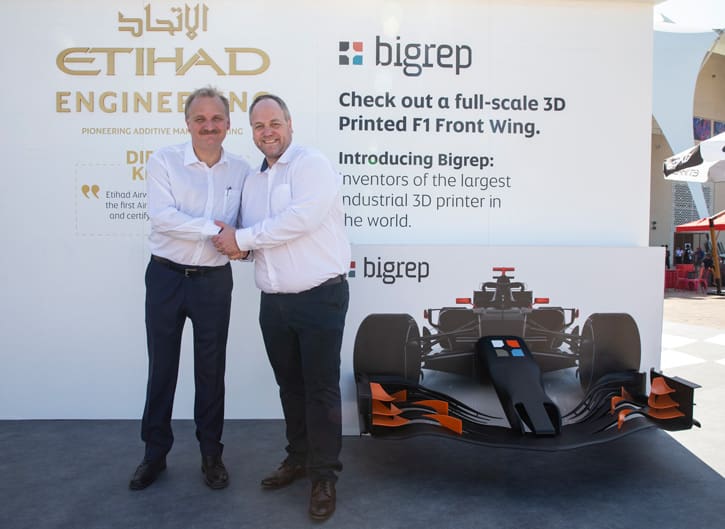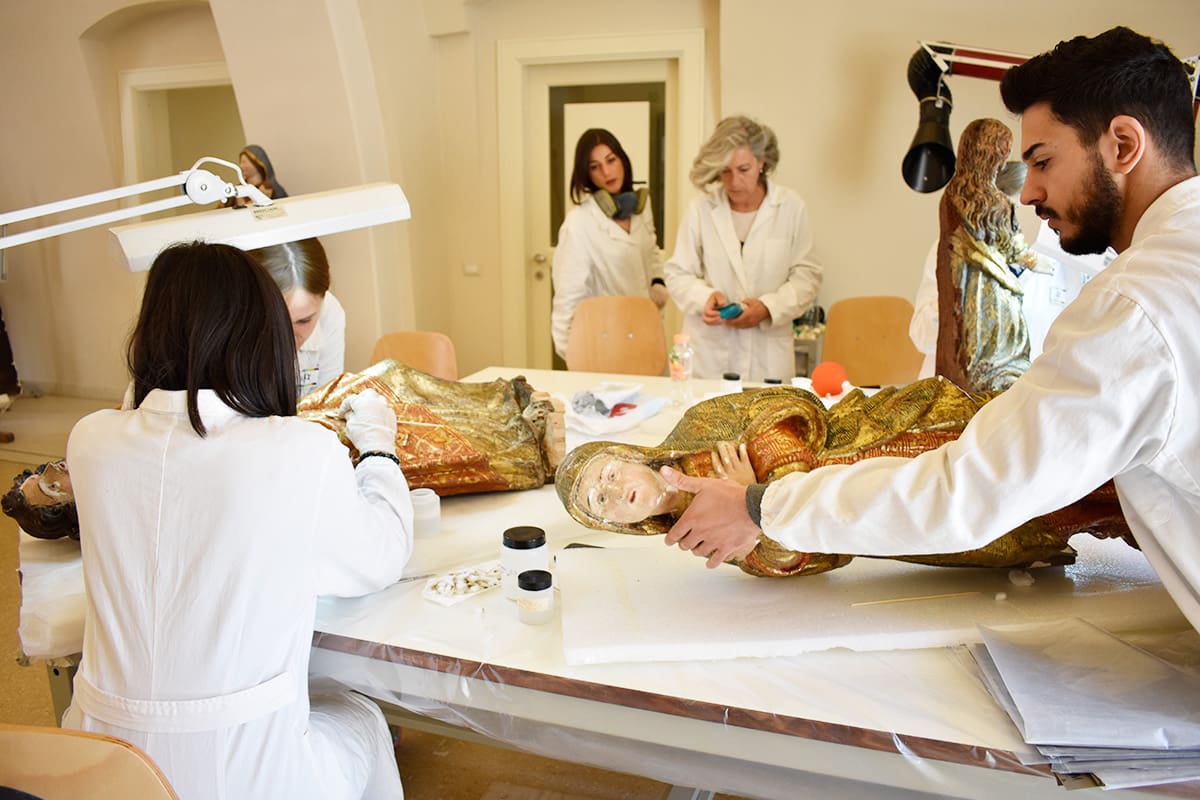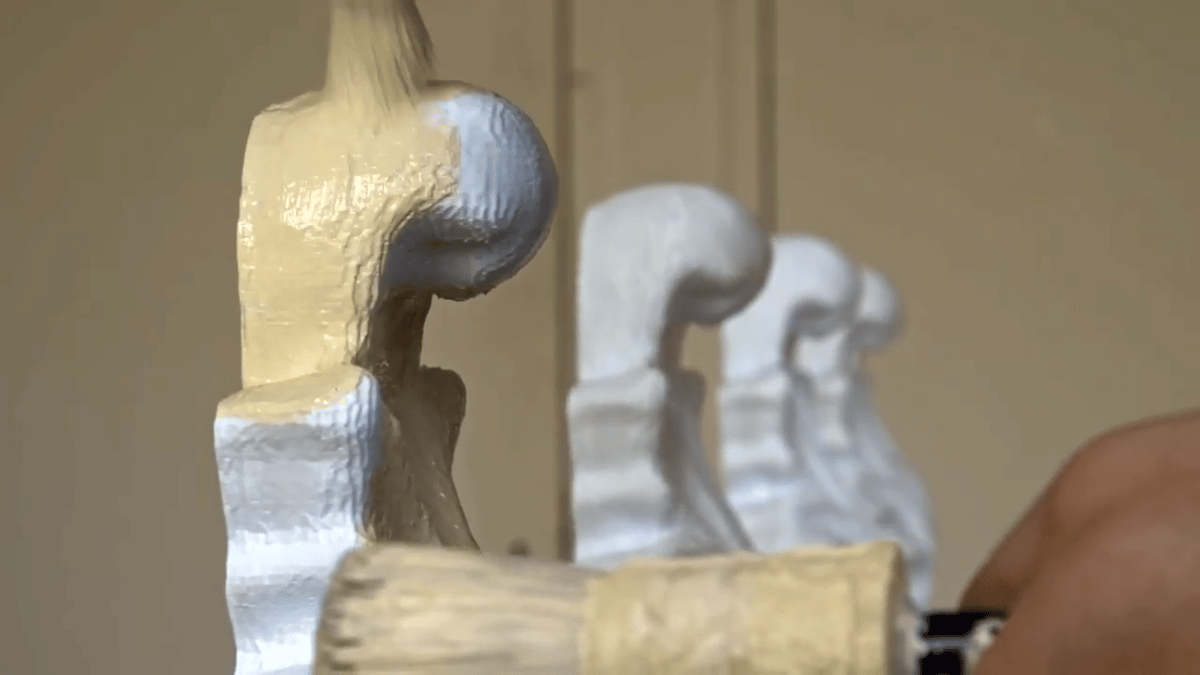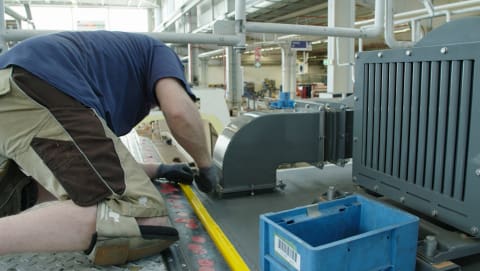Historically speaking, one of the primary constraints that have hindered the growth of industrial-grade 3D printing has been build area limitations. While 3D printing technology allows designers and engineers to produce and constantly reiterate complex parts, they’re also often limited when it comes to size.
Thankfully, companies like the German-based 3D printer manufacturer BigRep have prioritized bringing industrial-grade large-format FDM 3D printers to the market. With the emergence of these enormous machines, both small and not-so-small businesses are adopting FDM 3D printing into their production workflow. One of the most popular large-scale options on the professional market is the BigRep Pro, an impressively sizable and surprisingly affordable industrial-grade FDM 3D printer.
Aside from its gargantuan build volume of 1080 x 980 x 960 mm, the BigRep Pro also has a fully enclosed metal frame and is equipped with the proprietary MXT extruder, a system designed to provide separation between filament feeding, melting and extrusion.
Prior to the release of the BigRep Pro, the manufacturer also found success with its flagship BigRep One, as well as the BigRep Studio and BigRep EDGE. There have been numerous other 3D printing companies that have rolled out professional large-scale 3D printers, including industry newcomers like Raise3D and Tractus3D, as well as additive manufacturing veterans like Stratasys.
In the following listicle, we’ll share with you some of the most pivotal use cases for the BigRep Pro and other large-scale FDM 3D printers. From automotive applications to works of art, the way industrial FDM 3D printing is reshaping the design and manufacturing is certainly a sight to behold.
| 3D Printer | Industry | Application |
|---|---|---|
| NOWLAB Produces Fully 3D Printed NERA e-Bike | Automotive | End-Use |
| Boyce Technologies 3D Prints End-Use Parts | Electronics | End-Use |
| Fully 3D Printed Aerospace Seat System | Aerospace | Prototype |
| Urban Architecture with 3D Printed GENESIS Eco Screen | Architecture | End-Use |
| Etihad Airways Engineering Uses BigRep 3D Printing | Aerospace | Fixtures and Jigs/End-Use Parts |
| Raise3D 3D Printing Helps Restore Classical Art | Art Restoration | Educational |
| Tractus3D Reduces Construction Costs | Construction | End-Use |
| Stratasys Large-Scale 3D Printing Used in Rail Industry Solution | Railroad | End-Use |
NOWLAB Produces Fully 3D Printed NERA e-Bike
In one of the most fascinating projects to come from BigRep’s arsenal of use cases, the NERA e-bike from NOWLAB is a fully 3D printed electronic motorcycle that is both functional and aesthetically striking. Designed by Marco Mattia Cristofori with Maximilian Sedlak, the NERA is comprised of 15 parts which were 3D printed on BigRep large-scale 3D printers, including the BigRep Pro.
Although the bike is not available for purchase, this e-bike was created as a use case to show off what BigRep 3D printers are capable of. The final dimensions of the bike are 190 x 90 x 55 cm (74.8 x 35.4 x 21.6 in), featuring unique design concepts such as airless tires and a custom-fitted seat.
This 3D printed bike was made using a wide array of BigRep filaments, including ProHT, ProFLEX, PETH, and PLA. Outside of the battery, motor, cable, and control systems, every single part of the NERA was 3D printed, such as the entire body, rims, tires, steering, seat, headlight, and shocks.
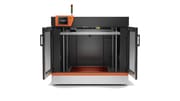

Boyce Technologies 3D Prints End-Use Parts
According to BigRep, the first company to install the BigRep Pro into its production facility was the New York-based security and communications equipment manufacturer Boyce Technologies. Before the installation of the BigRep Pro, Boyce Technologies had already purchased and installed the BigRep Studio, which was initially used for prototyping, test fitting, and the development of thermoforming molds.
More recently, the company was utilizing BigRep 3D printing to manufacture end-use parts found in Verizon kiosks that are placed throughout the New York City subway system. This digital information system contains a light beacon with a cellular antenna and sensors. The BigRep Studio was used to create the housing for this transmitter, which was integrated into 30 different units.
Now, Boyce Technologies is planning to use the BigRep Pro to produce large proof of concepts at a faster pace than its competition. In other words, you can expect more use cases to come out of this upgrade from the BigRep Studio to BigRep Pro.
“We’re a company known to move really fast. It’s our competitive advantage, and now with the PRO our additive capabilities have increased five times,” said Ajmal Aqtash, Director of Robotics at Boyce Technologies.


Fully 3D Printed Aerospace Seat System
In collaboration with Dassault Système, BigRep utilized its BigRep Pro to produce two fully 3D printed aerospace seat systems while showcasing at the Aircraft Interiors Expo in Hamburg, which took place in April 2019. The prototypes were created to demonstrate this large-scale 3D printer’s ability to recreate aircraft interiors while improving the passenger’s experience.
Designed by NOWLAB, there were two different seats created using the BigRep Pro. The Retro Seat is an original airline seat reinvented with 3D printing while the Aero Seat is a more futuristic bionic passenger seat. Both seat systems were manufactured with Dassault Systèmes’ 3DEXPERIENCE platform, which helped engineers optimize the design and simulate parts based on space allocation, loads, constraints, and more.
“Our Retro Seat saves 50 percent of weight, creating huge benefits for sustainable aircraft engineering and operational costs. Our prototypes demonstrate the massive benefits of 3D printing for manufacturers and airlines,” said Daniel Büning, co-founder and Managing Director of NOWLAB at BigRep.
The Retro Seat was designed with impressive high-tech features, including inductive charging for wireless smartphones, outlets for connecting tablets and other devices on the back of the headrest, as well as a laptop storage area embedded into the armrest. On the other hand, the Aero Seat has a bionic look and was designed to adapt to the passenger’s body shape. The idea behind this passenger seat is that 3D body scanning can be used to produce a shell that provides comfort to passengers, reducing stress and physical discomfort during extended trips.


Urban Architecture with 3D Printed GENESIS Eco Screen
While the BigRep Pro is the latest and most innovative large-scale system from BigRep, the German 3D printer manufacturer has also had several success stories with its flagship machine: the BigRep One 3D printer. Boasting a minimalistic open frame and a whopping 1005 x 1005 x 1005 mm build volume, this 3D printer has been used for a variety of projects and applications.
One of the most impressive creations extruded from the BigRep One is the GENESIS, a fully 3D printed biodiversity habitat that was designed by Lindsay Lawson of NOWLAB. This unique structure was designed to be a habitat for plants and insects, integrated with embedded channels to allow for water flow and drainage. The GENESIS Eco Screen measures four by four meters and was printed on four different BigRep One 3D printers using BigRep PETG and BASF Innofil3D rPET materials.
According to BigRep, this architectural feat was created to showcase how plastic waste can be minimized and used to produce an environmentally beneficial structure. The GENESIS, which was designed using solar radiation analysis for agent-based modeling and parametric design, takes on a distinct, tree-like shape.
All in all, this concept is meant to demonstrate how large-scale 3D printing can be used to reduce raw material consumption, work with recycled materials from landfills, while also providing a sustainable structure for plants and insects to thrive.


Etihad Airways Engineering Uses BigRep 3D Printing
Another major partnership that aims to showcase the benefits of large-scale FDM 3D printing, the aerospace company Etihad Airways Engineering is utilizing a BigRep ONE 3D printer in its daily operations. Stationed in its Maintenance, Operations and Repair facility in Abu Dhabi, Etihad Engineering is utilizing the printer to produce jigs, fixtures, and other parts on-site.
Established back in 2018, the partnership between BigRep and Eithad Engineering also encompasses a collaborative effort to develop, test, and certify new materials for 3D printed aircraft cabin parts using the BigRep EDGE 3D printer. Specifically, the aerospace company plans to work with BigRep to 3D print large cabin parts that are able to be seamlessly customized.
Etihad Engineering will also leverage its familiarity with the aircraft cabin to provide its design organization and production organization approvals, as well as an in-house flammability lab to test the 3D printed parts. Additionally, the two companies will work together to develop and test new materials that meet stringent EASA and FAA requirements.
“We are at the forefront of bringing this exciting technology into aviation and will work with our partners to ensure a successful certification of 3D printing technology, and with it towards the vision of a 3D-printed cabin,” said Bernhard Randerath, Vice President Design, Engineering & Innovation of Etihad Airways Engineering.
Raise3D 3D Printing Helps Restore Classical Art
Although BigRep is certainly a champion of large-format 3D printing, the company is far from the only one occupying this space on the market. Closer to the consumer-end of the spectrum is Raise3D, the Chinese manufacturer known for providing large-scale solutions at a relatively low cost.
On its website, Raise3D has shown off a number of unique applications, but one that we found especially endearing was an Italian art restoration project conducted by sculptors at the Istituto Superiore per la Conservazione ed il Restauro (ISCR).
Working with the Italian 3D printer distributor Crea 3D, teachers from the institute wanted the students to experiment with 3D scanning and 3D printing technology. They turned to Raise3D’s large-format 3D printers to research ways to restore works of classical art that have cultural significance in Italy.
First, the team used a 3D scanner to upload exact replicas of cultural artifacts into ideaMaker, Raise3D’s proprietary slicing software. From there, the 3D models of recreated artifacts were patched up, prepared, and finally, 3D printed to showcase how this technology can contribute to restoration projects.
Tractus3D Reduces Construction Costs
Allowing for faster print speeds and more build space area than Cartesian models, Delta-styled 3D printers are also great candidates for large-scale 3D printing. One of the leading manufacturers of large-format Delta 3D printers is Tractus3D, which has a T3000 model (1000 x 1450mm print area) and T3500 (1000 x 2100mm print area).
Both of these monstrous machines were used by Woonstad Rotterdam, a Dutch housing cooperation, to restore two 19th Century buildings that were heavily damaged during the Second World War. While renovating a couple of buildings on ‘Oude Binnenweg’ street, the team found that the building was missing nine drains that supported a roof gutter that stood 10 meters in height.
After meeting with specialists to figure out the optimal way to recreate these ornaments, they settled on 3D printing after recognizing its value in the construction industry. Due to the low overhead cost and ability to recreate these large structures with the proper materials, Tractus3D 3D printers made it much easier to tackle both time and budget restraints.
The team used PET material to replicate the large-scale ornaments, which provided exceptional strength and durability, while also making these massive models lightweight. While the original gutters were made using plaster and were susceptible to breakage, the PET material used to produce the 3D printed replicas are said to be “virtually impossible to crack.”
Furthermore, the 3D printed ornaments have a similar look to the original version made back in 1880, keeping the historical appearance of the building intact. Finally, because the ornaments sit above a busy street, the 3D printed versions are largely weightless, ensuring that if anything goes wrong with the structure, the public walking underneath it won’t be in harm’s way.
Stratasys Large-Scale 3D Printing Used in Rail Industry Solution
On the industrial side of spectrum, the additive manufacturing veteran Stratasys has leveraged large-scale FDM 3D printing technology to be used by several partners and customers in the railroad industry. Introduced at Formnext 2019, the new Rail Industry Solution aims to help passenger trains become more reliable and reduce costs by allowing operators to 3D print spare parts on-demand.
The Rail Industry Solution will make use of Stratasys Fortus 3D printers, including the large-format Fortus 900, which has a 914 x 609 x 914 mm build volume. In one early use case involving the Rail Industry Solution, Bombardier Transportation used the Stratasys F900 3D Printer to 3D print customized air vent systems.
Compatible with the Fortus 3D printer line, both ULTEM 9085 resin and Antero 800NA materials have already passed the European Union’s Rail Standard, EN45545-2. Using this new service, rail operators will be able to quickly produce unique spare parts that meet stringent government certification requirements, helping them to reduce lead times and production costs.
Aside from Bombardier Transportation, a number of over customers are already taking part in the Rail Industry Solution, including Angel Trains, Chiltern Railways, DB ESG, and Siemens Mobility.
License: The text of "8 Great Business Use Cases for BigRep Pro & Co." by All3DP Pro is licensed under a Creative Commons Attribution 4.0 International License.
